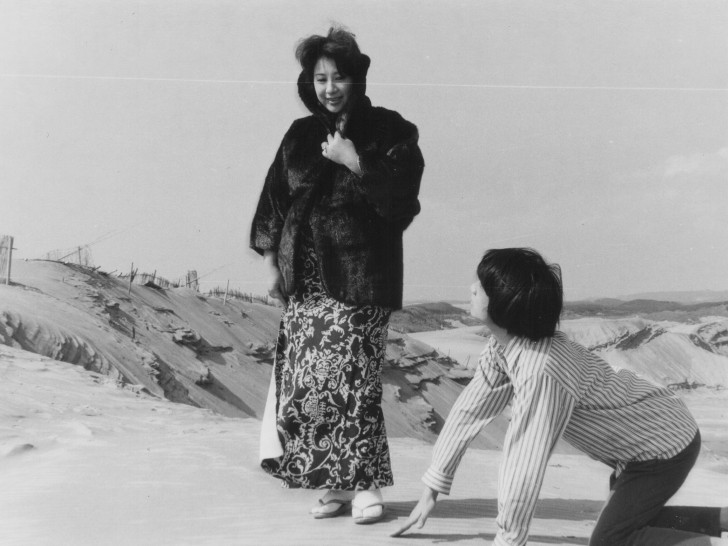
Good-bye
Screening on Film
$15 Special Event Tickets
Japan, 1971, 16mm, color and b&w, 52 min.
Japanese with English subtitles.
Print source: ACC Cinematheque
Good-bye was filmed in 1970, right around the time of the Yodo Incident, when the Japanese Red Army hijacked a Japan Airlines plane and flew it to North Korea. It was common then to describe Japanese-Korean relations as “the closest and farthest in the world.” Of course, most Koreans, understandably, could not quickly forgive their long experience of colonialism under the Japanese, and most Japanese were content to ignore their neighbor and look instead towards the powers of Europe and the US. But the lion’s share of our ancestors came to Japan from the Korean Peninsula. I hail from Tana Village, which is located in Koza County in Kanagawa Prefecture (since renamed Tana, Sagamihara). But Koza County was first called Kohuri County by the people who settled it. They emigrated from Koguryo [Goguryeo], an ancient kingdom in the north of Korea—and there is an obvious resemblance between the two place names. Even my family, name, Kanai, shares this connection: it suggests metalwork, and we know that the early immigrants from Korea possessed fine metalwork technology. Most likely, my ancestors were among these metalworkers. It’s with this background in mind, then, that I made Good-bye. The protagonist is an aphasic young boy who meets, on one of his regular paths, a “Koguryo Beauty” who shows him how to trace his roots. That this search takes place in a 1970 Korea that was still under martial law lends a further tension to the story, but it doesn’t stop there. Within this drama lies yet another, making Good-bye a one-of-a-kind road movie. – KK
When first screened at the 2003 Image Forum Festival, this video work provoked a lot of commentary; it was also selected for the International Critics’ Prize at the 50th Oberhausen International Shot Film Festival. As we age, a lot of our bodily functions grow worse for wear, but lurking within me was another being. Katsumaru develops the special powers of an avant-garde mystic and spends his days and nights practicing his techniques. And lo and behold, this Katsumaru could summon two mountain pigeons and make them build a nest! Katsumaru completed many “miracles,” including the rearing of these birds’ young chicks. But these are no feats of fancy, nor tricks of magic. The mystical occurrences are veritable events that unfold before your eyes, captured in this uniquely mysterious film. – KK









